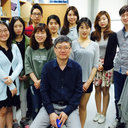Preventive effects of chebulic acid isolated from Terminalia chebula on advanced glycation endproduct-induced endothelial cell dysfunction.
Keywords
Abstract
OBJECTIVE
The aqueous extract of Terminalia chebular fruits was reported to have anti-hyperglycemia and anti-diabetic complication effects. The present study therefore investigated the protective mechanism of chebulic acid, a phenolcarboxylic acid compound isolated from the ripe fruits of Terminalia chebula against advanced glycation endproducts (AGEs)-induced endothelial cell dysfunction.
METHODS
To investigate the protective mechanism of chebulic acid against vascular endothelial dysfunction human umbilical vein endothelial cells (HUVEC) were treated with chebulic acid in the presence/absence of glyceraldehyde-related AGEs (glycer-AGEs).
RESULTS
HUVEC incubated with 100 μg/ml of glycer-AGEs had significantly enhanced reactive oxygen species formation, whereas the treatment of chebulic acid dose-dependently reduced glycer-AGE-induced formation to 108.2 ± 1.9% for 25 μM versus 137.8 ± 1.1% for glycer-AGEs treated alone. The transendothelial electrical resistance (TER) value of the glycer-AGEs group was dramatically decreased to 76.9 ± 2.2% compared to the control, whereas chebulic acid treatment prevented glycer-AGE-induced TER change with a value of 91.3 ± 5.3%. The incubation of confluent HUVEC with 100 μg/ml of glycer-AGEs for 24h remarkably increased the adhesion of human monocytic THP-1 cells compared to non-stimulated HUVEC. These increases in HUVEC adhesiveness were dose-dependently reduced by chebulic acid.
CONCLUSIONS
The present study shows the effects of chebulic acid against the progression of AGE-induced endothelial cell dysfunction suggesting that this compound may constitute a promising intervention agent against diabetic vascular complications.


